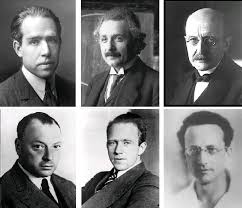Scientists that Contributed to Atomic Structure
Democritus (400 BC)
Democritus (460 – c. 370 BC) was an Ancient Greek pre-Socratic philosopher from Abdera, primarily remembered today for his formulation of an atomic theory of the universe. Democritus wrote extensively on a wide variety of topics.
None of Democritus’ original work has survived, except through second-hand references. Many of these references come from Aristotle, who viewed him as an important rival in the field of natural philosophy. He was known in antiquity as the ‘laughing philosopher’ because of his emphasis on the value of cheerfulness.
- Ancient Greek philosopher.
- First to suggest that matter is made up of tiny, indivisible particles called “atomos” (meaning indivisible).
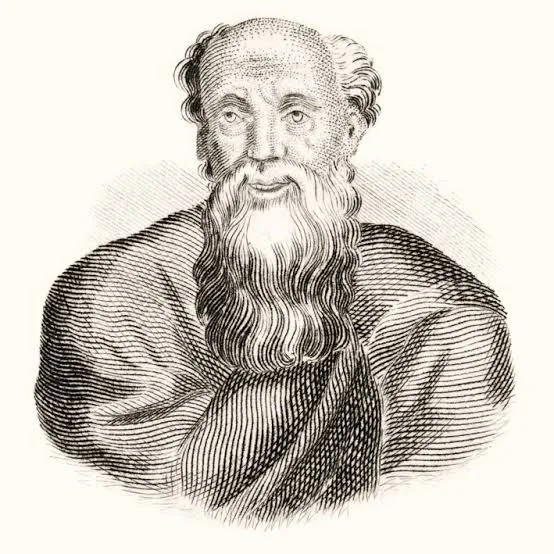
John Dalton (1803)
John Dalton FRS (September 1766 – 27 July 1844) was an English chemist, physicist and meteorologist. He introduced the atomic theory into chemistry. He also researched colour blindness; as a result, the umbrella term for red-green congenital colour blindness disorders is Daltonism in several languages.
- Proposed the first modern atomic theory.
- Atoms are solid, indivisible spheres.
- All atoms of an element are identical, but differ from other elements.
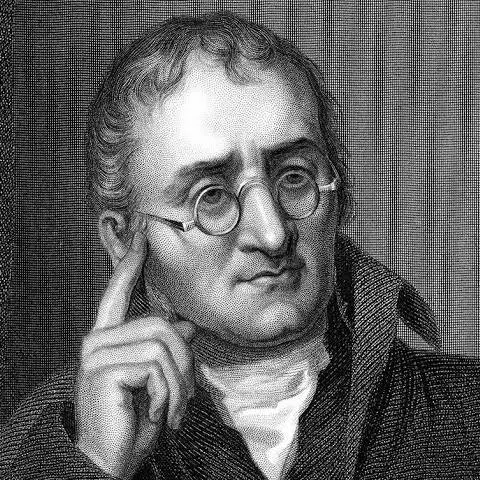
J.J. Thomson (1897)
Sir Joseph John “J. J.“ Thomson (18 December 1856 – 30 August 1940) was an English physicist whose study of cathode rays led to his discovery of the electron, a subatomic particle with a negative electric charge.
In 1897, Thomson showed that cathode rays were composed of previously unknown negatively charged particles (now called electrons), which he calculated must have bodies much smaller than atoms and a very large charge-to-mass ratio. Thomson is also credited with finding the first evidence for isotopes of a stable (non-radioactive) element in 1912, as part of his exploration into the composition of canal rays (positive ions). His experiments to determine the nature of positively charged particles, with Francis William Aston, were the first use of mass spectrometry and led to the development of the mass spectrograph.
Thomson was awarded the 1906 Nobel Prize in Physics “in recognition of the great merits of his theoretical and experimental investigations on the conduction of electricity by gases”. Thomson was also a teacher, and seven of his students went on to win Nobel Prizes: Ernest Rutherford (Chemistry 1908), Lawrence Bragg (Physics 1915), Charles Barkla (Physics 1917), Francis Aston (Chemistry 1922), Charles Thomson Rees Wilson (Physics 1927), Owen Richardson (Physics 1928) and Edward Appleton (Physics 1947). Only Arnold Sommerfeld‘s record of mentorship offers a comparable list of high-achieving students.
- Discovered the electron using the cathode ray experiment.
- Proposed the “Plum Pudding Model”, where electrons are embedded in a positively charged sphere.
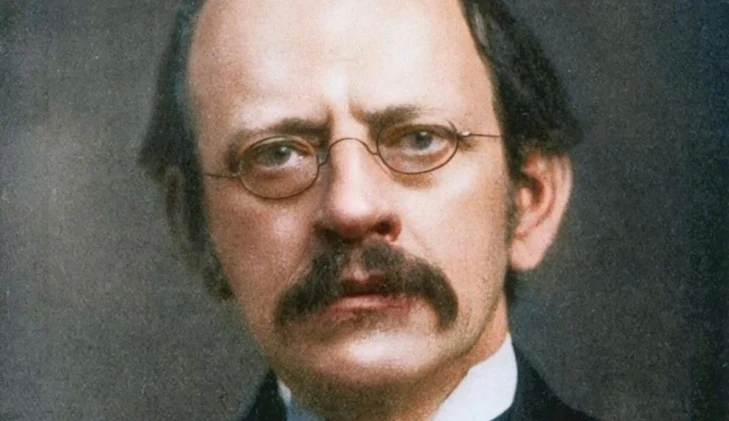
Ernest Rutherford (1911)
Ernest Rutherford, Baron Rutherford of Nelson (30 August 1871 – 19 October 1937) was a New Zealand physicist and chemist who was a pioneering researcher in both atomic and nuclear physics. He has been described as “the father of nuclear physics”, and “the greatest experimentalist since Michael Faraday“. In 1908, he was awarded the Nobel Prize in Chemistry “for his investigations into the disintegration of the elements, and the chemistry of radioactive substances.” He was the first Oceanian Nobel laureate, and the first to perform Nobel-awarded work in Canada.
Rutherford’s discoveries include the concept of radioactive half-life, the radioactive element radon, and the differentiation and naming of alpha and beta radiation. Together with Thomas Royds, Rutherford is credited with proving that alpha radiation is composed of helium nuclei. In 1911, he theorized that atoms have their charge concentrated in a very small nucleus. He arrived at this theory through his discovery and interpretation of Rutherford scattering during the gold foil experiment performed by Hans Geiger and Ernest Marsden. In 1912, he invited Niels Bohr to join his lab, leading to the Bohr model of the atom. In 1917, he performed the first artificially induced nuclear reaction by conducting experiments in which nitrogen nuclei were bombarded with alpha particles. These experiments led him to discover the emission of a subatomic particle that he initially called the “hydrogen atom”, but later (more precisely) renamed the proton. He is also credited with developing the atomic numbering system alongside Henry Moseley. His other achievements include advancing the fields of radio communications and ultrasound technology.
Rutherford became Director of the Cavendish Laboratory at the University of Cambridge in 1919. Under his leadership, the neutron was discovered by James Chadwick in 1932. In the same year, the first controlled experiment to split the nucleus was performed by John Cockcroft and Ernest Walton, working under his direction. In honour of his scientific advancements, Rutherford was recognised as a baron of the United Kingdom. After his death in 1937, he was buried in Westminster Abbey near Charles Darwin and Isaac Newton. The chemical element rutherfordium (104Rf) was named after him in 1997.
- Conducted the Gold Foil Experiment.
- Discovered the nucleus a small, dense, positively charged center of the atom.
- Proposed that most of the atom is empty space.
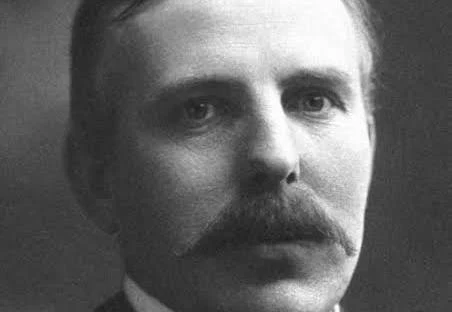
Niels Bohr (1913)
Niels Henrik David Bohr (7 October 1885 – 18 November 1962) was a Danish theoretical physicist who made foundational contributions to understanding atomic structure and quantum theory, for which he received the Nobel Prize in Physics in 1922. Bohr was also a philosopher and a promoter of scientific research.
Bohr developed the Bohr model of the atom, in which he proposed that energy levels of electrons are discrete and that the electrons revolve in stable orbits around the atomic nucleus but can jump from one energy level (or orbit) to another. Although the Bohr model has been supplanted by other models, its underlying principles remain valid. He conceived the principle of complementarity: that items could be separately analysed in terms of contradictory properties, like behaving as a wave or a stream of particles. The notion of complementarity dominated Bohr’s thinking in both science and philosophy.
Bohr founded the Institute of Theoretical Physics at the University of Copenhagen, now known as the Niels Bohr Institute, which opened in 1920. Bohr mentored and collaborated with physicists including Hans Kramers, Oskar Klein, George de Hevesy, and Werner Heisenberg. He predicted the properties of a new zirconium-like element, which was named hafnium, after the Latin name for Copenhagen, where it was discovered. Later, the synthetic element bohrium was named after him because of his groundbreaking work on the structure of atoms.
During the 1930s, Bohr helped refugees from Nazism. After Denmark was occupied by the Germans, he met with Heisenberg, who had become the head of the German nuclear weapon project. In September 1943 word reached Bohr that he was about to be arrested by the Germans, so he fled to Sweden. From there, he was flown to Britain, where he joined the British Tube Alloys nuclear weapons project, and was part of the British mission to the Manhattan Project. After the war, Bohr called for international cooperation on nuclear energy. He was involved with the establishment of CERN and the Research Establishment Risø of the Danish Atomic Energy Commission and became the first chairman of the Nordic Institute for Theoretical Physics in 1957.
- Developed the Bohr Model of the atom.
- Suggested electrons orbit the nucleus in fixed energy levels (shells).
- Explained how atoms emit or absorb energy.
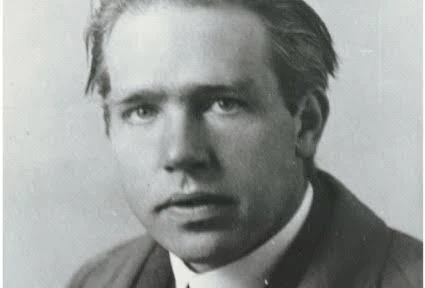
Erwin Schrödinger
Erwin Rudolf Josef Alexander Schrödinger (12 August 1887 – 4 January 1961), sometimes written as Schroedinger or Schrodinger, was an Austrian-Irish theoretical physicist who developed fundamental results in quantum theory. In particular, he is recognized for postulating the Schrödinger equation, an equation that provides a way to calculate the wave function of a system and how it changes dynamically in time. Schrödinger coined the term “quantum entanglement” in 1935.[4][5][6]
In addition, he wrote many works on various aspects of physics: statistical mechanics and thermodynamics, physics of dielectrics, color theory, electrodynamics, general relativity, and cosmology, and he made several attempts to construct a unified field theory. In his book What Is Life? Schrödinger addressed the problems of genetics, looking at the phenomenon of life from the point of view of physics. He also paid great attention to the philosophical aspects of science, ancient, and oriental philosophical concepts, ethics, and religion.[7] He also wrote on philosophy and theoretical biology. In popular culture, he is best known for his “Schrödinger’s cat” thought experiment.[8][9]
Spending most of his life as an academic with positions at various universities, Schrödinger, along with Paul Dirac, won the Nobel Prize in Physics in 1933 for his work on quantum mechanics, the same year he left Germany due to his opposition to Nazism. In his personal life, he lived with both his wife and his mistress which may have led to problems causing him to leave his position at Oxford. Subsequently, until 1938, he had a position in Graz, Austria, until the Nazi takeover when he fled, finally finding a long-term arrangement in Dublin, Ireland, where he remained until retirement in 1955, and where he allegedly sexually abused several minors.

James Chadwick (1932)
Sir James Chadwick (20 October 1891 – 24 July 1974) was an English nuclear physicist who received the Nobel Prize in Physics in 1935 for his discovery of the neutron. In 1941, he wrote the final draft of the MAUD Report, which inspired the U.S. government to begin serious atomic bomb research efforts. He was the head of the British team that worked on the Manhattan Project during World War II. He was knighted in Britain in 1945 for his achievements in nuclear physics.
Chadwick graduated from the Victoria University of Manchester in 1911, where he studied under Ernest Rutherford (known as the “father of nuclear physics”). At Manchester, he continued to study under Rutherford until he was awarded his MSc in 1913. The same year, Chadwick was awarded an 1851 Research Fellowship from the Royal Commission for the Exhibition of 1851. He elected to study beta radiation under Hans Geiger in Berlin. Using Geiger’s recently developed Geiger counter, Chadwick was able to demonstrate that beta radiation produced a continuous spectrum, and not discrete lines as had been thought. Still in Germany when World War I broke out in Europe, he spent the next four years in the Ruhleben internment camp.
After the war, Chadwick followed Rutherford to the Cavendish Laboratory at the University of Cambridge, where Chadwick earned his Doctor of Philosophy degree under Rutherford’s supervision from Gonville and Caius College, Cambridge, in June 1921. He was Rutherford’s assistant director of research at the Cavendish Laboratory for over a decade at a time when it was one of the world’s foremost centres for the study of physics, attracting students like John Cockcroft, Norman Feather, and Mark Oliphant. Chadwick followed his discovery of the neutron by measuring its mass. He anticipated that neutrons would become a major weapon in the fight against cancer. Chadwick left the Cavendish Laboratory in 1935 to become a professor of physics at the University of Liverpool, where he overhauled an antiquated laboratory and, by installing a cyclotron, made it an important centre for the study of nuclear physics.
- Discovered the neutron, a neutral particle in the nucleus.
- His discovery explained the rest of an atom’s mass not accounted for by protons.
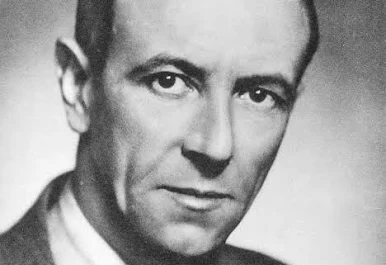
Modern Quantum Mechanical Model (1920s–present) -Developed by several scientists (Erwin Schrödinger, Werner Heisenberg, etc.).
The modern quantum mechanical model of the atom views electrons as wave-like entities, existing in regions of space called orbitals, rather than fixed orbits. It is based on probability, acknowledging the inherent uncertainty in simultaneously knowing an electron’s exact position and momentum.
- This model uses the Schrödinger equation to describe electron behavior and predict the probability of finding an electron in a specific region around the nucleus.
- Electrons do not travel in fixed paths but exist in regions called orbitals (electron cloud models). - This is the most accurate model of the atom today
